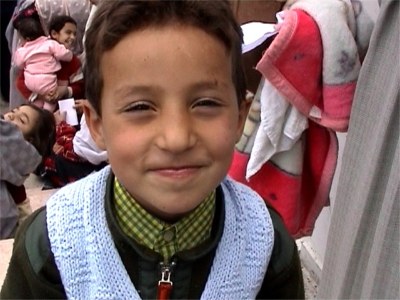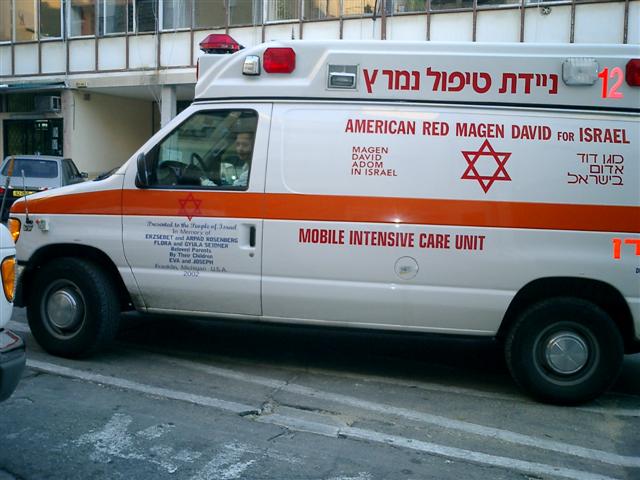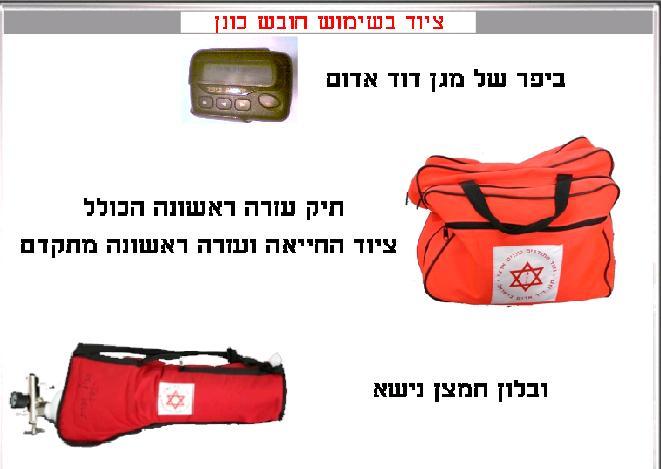Home > Oasis of Peace > Projects & Outreach > Humanitarian Aid > New developments in the HAP program
New developments in the HAP program
Tuesday 13 January 2004, by

HAP needs your help:
See below on how to help provide kits for volunteer ambulance crews.
January 2004: In a recent committee meeting, we shared information on the latest developments with our ongoing projects and decided upon some ones.
Medical equipment for clinics
The most ambitious of our ongoing projects is the provision of medical equipment to clinics in three Ramallah district towns and villages, namely Naalin, Media and Budrus. In preparation, we met with the Naalin’s mayor and the medical staff to discuss the needs of the clinic there. Similar meetings are planned for the other two villages.
We are engaged in writing proposals and have already received two encouraging commitments. The Rotary Club of Parchim in Germany has promised to help, and a similar promise has come from the Japanese Embassy in Israel. Ultimately this will be a very impressive project with many partners and, hopefully, will produce significant aid for these villages. Budrus (one of the villages), is currently much in the news since it has become the latest victim of Israel’s “security barrier”. With its farmlands and olive trees already being bulldozed away, the small village will eventually be enclosed on all sides, so that residents will need the army’s permission to move beyond its gates. Recently Israeli and foreign peace activists and villagers have tried to interrupt the work on the barrier there (see http://stopthewall.org/latestnews/237.shtml and related articles). All such attempts have met with stiff opposition from the IDF. According to the “Stop the Wall” website, demonstrators have been injured by rubber coated bullets and beatings, and tear gas has been fired into village homes.
Children’s projects
Malak has spent the last month undergoing physiotherapy at the Amira Bassma Rehabilitation Center in East Jerusalem. We are now trying to obtain the Center’s permission that she will stay longer.
Battul is at home in Faqua, near Jenin, recovering well from her heart surgery. With the help of the School for Peace (where voluntary deductions from staff salaries support a small humanitarian aid fund), we presented the family with a computer. This will serve Battul during her home recovery, as well as her parents (Battul’s mother is undertaking a distance-learning program with the Open University, and her father is a journalist).
Other requests
The committee has discussed a few more cases since we are overloaded with requests and it is very hard to turn people down. We decided that rather than take on new cases ourselves, we will try to cooperate in efforts together with other groups or individuals, and use our connections with Israeli hospitals and medical companies to obtain help for Palestinians. For example, we found a wheel chair company which was willing to contribute a motorized wheel chair to a boy from the Ramallah district village of Beit Sira, who is immobilized by multiple sclerosis.
We met once again to discuss future cooperation with Dr. Assli, the cardiologist who helped Battul. Working with both Nazareth’s French Hospital and Schneider Hospital, Dr. Assli has established a reputation as a saving angel for West Bank and Gaza Palestinians whose babies and small children require heart surgery. In cooperation with the hospitals, he has succeeded in helping many of these.
We have agreed to help Dr. Assli in future cases. We are happy with this connection since it can provide both life saving assistance to children in need and also facilitates cooperation between a Jewish and an Arab hospital. On Dr. Assli’s recommendation, the HAP committee has now decided to help to bring a boy from Gaza for surgery in Schneider Hospital.
Kits for ambulance service volunteers

Our most recent project is to help raise money for the personal kits carried by ambulance service volunteers in East Jerusalem. This effort has an interesting background. The Magen David Adom (MDA, or Red Shield of David) ambulance service treats residents from all parts of the supposedly “united” city, including the more than 180,000 Palestinians in its eastern part. Unfortunately, though both Jewish and Arab city residents volunteer for the service, all the ambulance stations are located in the city’s western (Jewish) side. Since September 2000, most Jewish volunteers have feared to enter Arab sections of the city without a police escort. The escort often takes up to an hour to arrange, with the consequence that there has been an observable increase in Arab mortalities.
A group of fifteen young Palestinian medics who serve as volunteers with the MDA raised the issue with its management. They demanded that ambulance stations be established in Arab sections of the city, together with ambulances that will be ready to accept calls.
The MDA management expressed willingness to provide ambulances and training for medics but, knowing that traditionally only a small number of Arabs have volunteered for the service, they stipulated that there must first be a large enough group of trainee candidates. The Palestinian medics took upon themselves the task of recruiting such a group, and were able to gather 40 men and women for training in the coming month. Among these are medical doctors who are willing to train and later volunteer with emergency help. The training will take place in East Jerusalem community centers, under the guidance of professional staff from Hadassah Hospital. The decision to conduct the training in Arab community centers is in keeping with the overall philosophy behind the initiative, which is to reduce the alienation that Jerusalem Arabs face in their daily encounters with the establishment.

The project, if successful, will help raise community consciousness among Jerusalem Arabs, giving them a feeling that this is their service, and lowering the antagonism felt by East Jerusalemites towards Jewish-dominated institutions. Central to this is the fact that the ambulances will be stationed in Arab neighborhoods and staffed by Arab volunteers. As another helpful token, the group has managed to persuade MDA to add Arabic to the insignia on all ambulances stationed on the Arab side of the city. This itself is quite an achievement, since even Israeli police cars bear only Hebrew and English signs.
We decided to try to help this group first because it will save lives, and secondly because it will produce cooperation between local Arab initiatives and Israeli institutions. Such networking, led by an empowered group of professional Palestinians challenges the status quo of Jewish control over all public functions in the city.
How you can help

The project needs donations towards the personal kit that each volunteer medic carries. Neither MDA or the municipality provide these kits. The expense is usually covered by community groups, synagogues and philanthropists. We have agreed to help the group in its fund raising efforts. The price for each personal kit (including basic equipment and a pager connected to the MDA station) is $1,380.
If you wish to help, please send money (see here for how) and write that it is for the Humanitarian Aid Project –Jerusalem Kits.
If you donate a kit, we will be happy to put your name on the kit, next that of Neve Shalom/Wahat al Salam.